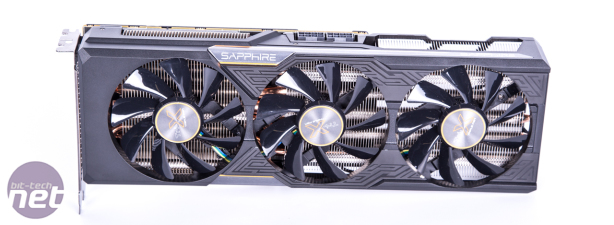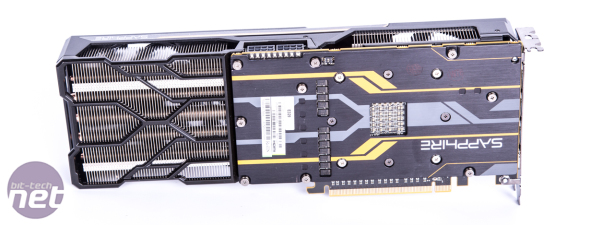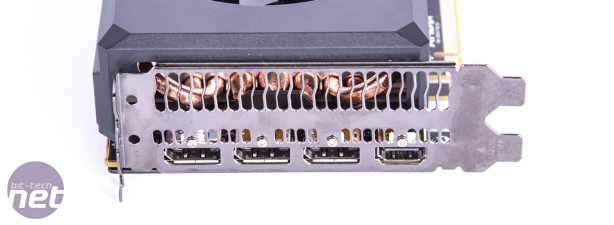Manufacturer: Sapphire Technology
UK price (as reviewed): Approx. £450 (inc VAT)
US price (as reviewed): MSRP $569 (ex Tax)
AMD's Radeon R9 Fury X graphics card delivers the full implementation of the company's new Fiji GPU capable of taking the fight to Nvidia's GeForce GTX 980 Ti, particularly at 4K resolutions. In order to unlock a more accessible price point for Fiji AMD is also releasing the R9 Fury which is a slightly cut-down version of the R9 Fury X. The primary difference between R9 Fury and R9 Fury X is a reduction of the stream processor count from 4,096 to 3,584, the equivalent of eight compute units (CUs) and the default clock speed is lower too - 1,000MHz instead of 1,050MHz. These changes are reflected in a revised price of $549 which is $100 less than the R9 Fury X, though the price isn't as low as some may have expected given the R9 Fury is intended to compete with Nvidia's GTX 980 which currently sits at $480.
Aside from the aforementioned alterations the R9 Fury is still a powerful graphics card equipping 4GB of high-bandwidth memory and a similar 275W TDP to the flagship R9 Fury X. AMD hasn't mandated a default cooling solution for the R9 Fury giving its board partners more flexibility to innovate with their own custom designs. Full-sized air-cooled solutions are the norm for the initial wave of R9 Fury graphics cards which consists of two at launch, one from ASUS and one from Sapphire. In the bit-tech test labs for today is the Sapphire R9 Fury Tri-X OC graphics card which features a slight factory overclock to 1,040MHz on the core, and the company's latest-generation triple-fan cooling solution.

Sapphire's latest iteration Tri-X cooling solution uses three 90mm fans, all of which have a dual ball-bearing design situated within a shroud designed to control airflow and provide additional rigidity for the graphics card. Underneath the fans is a high density aluminium heatsink with a large copper heatpipe array which makes contact with the GPU through a solid copper transfer plate.

The rear of the Sapphire R9 Fury Tri-X OC reveals the shortened PCB which is dwarfed by the large cooling solution. Sapphire uses a backplate on the PCB with a separate die-cast mounting frame for the remainder of the graphics card's length. The overall profile of the cooler is a little over two slots in thickness.
The two 8-pin PCIe power connections that deliver power to the Fiji GPU are situated at the end of the PCB which just so happens to be near the middle of the graphics card. Sapphire provides power through a 6-phase GPU VRM.

Rear I/O connectivity ditches DVI for a trio of DisplayPort 1.2 connections and a single HDMI 1.4a, but sadly there's no hardware support for HDMI 2.0 on the Fiji GPU at the current time.
UK price (as reviewed): Approx. £450 (inc VAT)
US price (as reviewed): MSRP $569 (ex Tax)
AMD's Radeon R9 Fury X graphics card delivers the full implementation of the company's new Fiji GPU capable of taking the fight to Nvidia's GeForce GTX 980 Ti, particularly at 4K resolutions. In order to unlock a more accessible price point for Fiji AMD is also releasing the R9 Fury which is a slightly cut-down version of the R9 Fury X. The primary difference between R9 Fury and R9 Fury X is a reduction of the stream processor count from 4,096 to 3,584, the equivalent of eight compute units (CUs) and the default clock speed is lower too - 1,000MHz instead of 1,050MHz. These changes are reflected in a revised price of $549 which is $100 less than the R9 Fury X, though the price isn't as low as some may have expected given the R9 Fury is intended to compete with Nvidia's GTX 980 which currently sits at $480.
| AMD Radeon R9 Fury X 4GB | AMD Radeon R9 Fury 4GB | AMD Radeon R9 390X 8GB | |
| GPU | |||
| Architecture | Graphics Core Next | Graphics Core Next | Graphics Core Next |
| Codename | Fiji | Fiji | Hawaii XT |
| Core Clock | Up to 1,050MHz | Up to 1,000MHz | Up to 1,050MHz |
| Stream Processors | 4,096 | 3,584 | 2,816 |
| Layout | 4 SEs, 64 CUs | 4 SEs, 56 CUs | 4 SEs, 44CUs |
| Texture Units | 256 | 224 | 176 |
| Rasterisers | 4 | 4 | 4 |
| Tesselation Units | 4 | 4 | 4 |
| ROPs | 64 | 64 | 64 |
| Transistors | 8.9 billion | 8.9 billion | 6.2 billion |
| Die Size | 596mm2 | 596mm2 | 438mm2 |
| Process Node | 28nm | 28nm | 28nm |
| Memory | |||
| Amount | 4GB HBM | 4GB HBM | 8GB GDDR5 |
| Frequency | 500MHz (1GHz effective) | 500MHz (1GHz effective) | 1.5GHz (6GHz effective) |
| Interface | 4,096-bit | 4,096-bit | 512-bit |
| Bandwidth | 512GB/sec | 512GB/sec | 384GB/sec |
| Card Specifications | |||
| Power Connectors | 2 x 8-pin | 2 x 8-pin | 1 x 8-pin, 1 x 6-pin |
| Stock Card Length | 195mm | N/A | N/A |
| TDP | 275W | 275W | 275W |
Aside from the aforementioned alterations the R9 Fury is still a powerful graphics card equipping 4GB of high-bandwidth memory and a similar 275W TDP to the flagship R9 Fury X. AMD hasn't mandated a default cooling solution for the R9 Fury giving its board partners more flexibility to innovate with their own custom designs. Full-sized air-cooled solutions are the norm for the initial wave of R9 Fury graphics cards which consists of two at launch, one from ASUS and one from Sapphire. In the bit-tech test labs for today is the Sapphire R9 Fury Tri-X OC graphics card which features a slight factory overclock to 1,040MHz on the core, and the company's latest-generation triple-fan cooling solution.

Sapphire's latest iteration Tri-X cooling solution uses three 90mm fans, all of which have a dual ball-bearing design situated within a shroud designed to control airflow and provide additional rigidity for the graphics card. Underneath the fans is a high density aluminium heatsink with a large copper heatpipe array which makes contact with the GPU through a solid copper transfer plate.

The rear of the Sapphire R9 Fury Tri-X OC reveals the shortened PCB which is dwarfed by the large cooling solution. Sapphire uses a backplate on the PCB with a separate die-cast mounting frame for the remainder of the graphics card's length. The overall profile of the cooler is a little over two slots in thickness.
The two 8-pin PCIe power connections that deliver power to the Fiji GPU are situated at the end of the PCB which just so happens to be near the middle of the graphics card. Sapphire provides power through a 6-phase GPU VRM.

Rear I/O connectivity ditches DVI for a trio of DisplayPort 1.2 connections and a single HDMI 1.4a, but sadly there's no hardware support for HDMI 2.0 on the Fiji GPU at the current time.

MSI MPG Velox 100R Chassis Review
October 14 2021 | 15:04









Want to comment? Please log in.